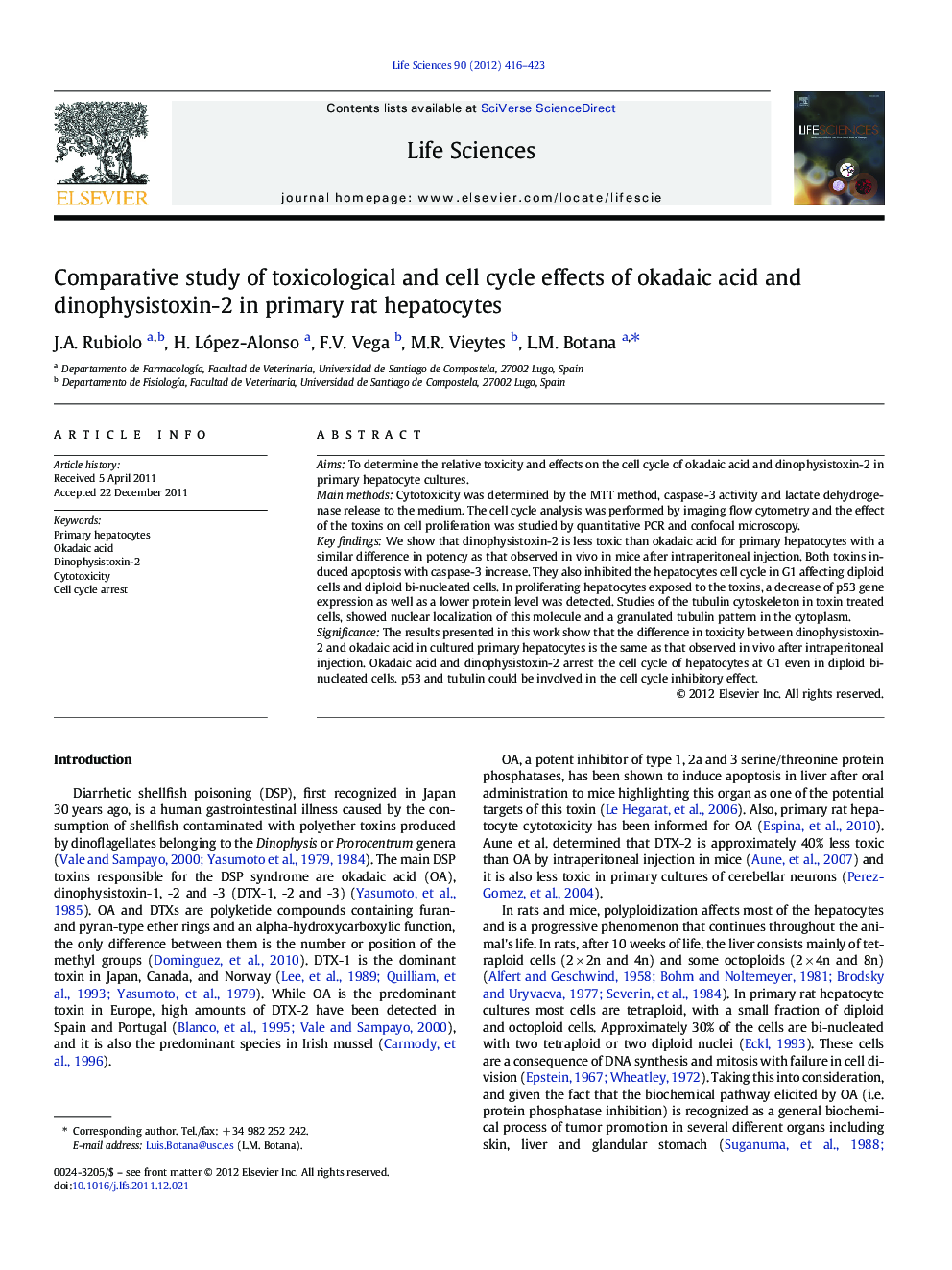| Article ID | Journal | Published Year | Pages | File Type |
|---|---|---|---|---|
| 2551794 | Life Sciences | 2012 | 8 Pages |
AimsTo determine the relative toxicity and effects on the cell cycle of okadaic acid and dinophysistoxin-2 in primary hepatocyte cultures.Main methodsCytotoxicity was determined by the MTT method, caspase-3 activity and lactate dehydrogenase release to the medium. The cell cycle analysis was performed by imaging flow cytometry and the effect of the toxins on cell proliferation was studied by quantitative PCR and confocal microscopy.Key findingsWe show that dinophysistoxin-2 is less toxic than okadaic acid for primary hepatocytes with a similar difference in potency as that observed in vivo in mice after intraperitoneal injection. Both toxins induced apoptosis with caspase-3 increase. They also inhibited the hepatocytes cell cycle in G1 affecting diploid cells and diploid bi-nucleated cells. In proliferating hepatocytes exposed to the toxins, a decrease of p53 gene expression as well as a lower protein level was detected. Studies of the tubulin cytoskeleton in toxin treated cells, showed nuclear localization of this molecule and a granulated tubulin pattern in the cytoplasm.SignificanceThe results presented in this work show that the difference in toxicity between dinophysistoxin-2 and okadaic acid in cultured primary hepatocytes is the same as that observed in vivo after intraperitoneal injection. Okadaic acid and dinophysistoxin-2 arrest the cell cycle of hepatocytes at G1 even in diploid bi-nucleated cells. p53 and tubulin could be involved in the cell cycle inhibitory effect.
